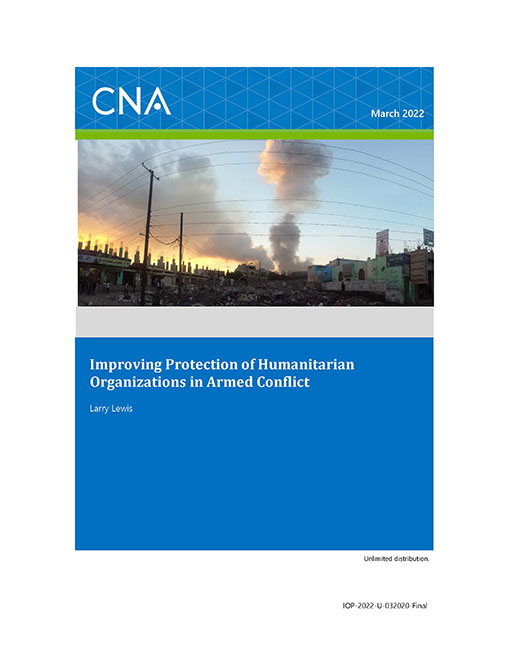Despite one hundred and fifty years of international law seeking to promote humanity and reduce suffering in armed conflict, civilians continue to suffer in war. One particular tragedy is that humanitarian organizations continue to be the subject of tragic attacks, and too many times they are obstructed or harassed by security forces, causing them harm and limiting vital services from aiding the civilian population. In this report, we discuss steps militaries can take to help reduce these tragic incidents and improve protection of humanitarian organizations— and of civilians overall.
Communication is vital to the act of protection. In particular, two types of communication can collectively strengthen the practical protection of humanitarian organizations in armed conflict: humanitarian notification and civil-military (CIV-MIL) coordination. We discuss the use of a prototype humanitarian notification system (HNS) and how such a system can improve the overall quality and consistency of information over current ad hoc processes, simplifying the work of militaries to integrate it into military systems and processes and creating a stronger foundation for effective deconfliction. This system can also be used to strengthen CIV- MIL coordination more broadly.
Military deconfliction is intended to leverage communication with and information regarding humanitarian organizations in order to avoid tragic attacks. Deconfliction processes help ensure that engagement decisions are informed by knowledge regarding humanitarian and civilian entities in targeted areas. We discuss both of these deconfliction processes generally and how improved information—obtained, for example, through the discussed prototype HNS—could be used to further strengthen deconfliction processes beyond the historically narrow approach of the no-strike list (NSL).
When deconfliction processes fail, identification of humanitarian organizations can serve as a safety net, averting inadvertent attacks. Yet history shows that such identification can be challenging, especially in the light of recent technological advances in military sensors. We suggest some ways to improve identification, including through multi-signature markings, additional tools for identification leveraging artificial intelligence (AI), and deeper integration of information regarding civilian objects and humanitarian organizations in military data links and operator displays.
An essential element of reducing the patterns of attacks on humanitarian organizations is strengthening learning and accountability processes. We have discussed three approaches to achieving this approach: where countries can take steps themselves, where partners and providers of military assistance can act, and where all countries can work for the improved protection of humanitarian entities and of civilians overall. To be effective, this approach should go beyond the largely reactive and declarative international mode and seek to become more proactive. Such an approach should also include a stronger commitment to bilateral cooperation and conditionality from countries that provide military assistance in order to seek improved conduct and operational outcomes.
We conclude with how some of these solutions can be leveraged to better strengthen the protection of civilians overall, including the creation of a general information architecture for civilians. These proposed solutions point to an underlying truth: there is much more than can be done to strengthen the protection of civilians, including protecting humanitarian organizations. Civilians may always suffer in war, but such suffering can be reduced. This report serves as a starting point for developing more ambitious and comprehensive solutions toward that goal.
Download reportApproved for public release. Unlimited distribution.
Details
- Pages: 42
- Document Number: IOP-2022-U-032020-Final
- Publication Date: 3/1/2022
